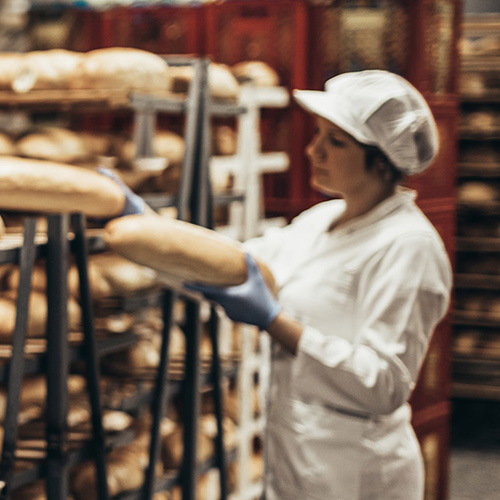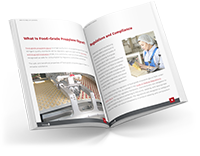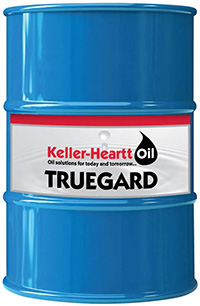
Propylene glycol is a colorless, odorless, and slightly sweet-tasting organic compound that has a wide range of applications across various industries, including the food, pharmaceutical, cosmetic, and automotive industries. In this detailed guide, we’ll explore everything you need to know about food-grade propylene glycol, including its properties, its uses, safety considerations, regulations, and more.

Don’t have time to read the whole guide?
How about a copy to-go? Just fill out this quick form and read the guide when it's convenient for you.

What Is Food-Grade Propylene Glycol?
Food-grade propylene glycol is a high-purity form of propylene glycol that meets stringent quality standards set by regulatory agencies such as the U.S. Food and Drug Administration (FDA). It is commonly used as a food additive and is recognized as safe for consumption by regulatory authorities worldwide.
The safe and beneficial properties of food-grade propylene glycol make it a versatile substance.
Common Uses
Propylene glycol’s unique properties contribute to its diverse use in food manufacturing. Most commonly, it functions as a:
- Preservative and antimicrobial agent: Propylene glycol’s hygroscopic properties (attracting and retaining moisture) help prevent the growth of bacteria and mold, thus extending the shelf life of food products. For this reason, it is commonly used in baked goods, candies, and pet food.
- Anticaking agent: Because propylene glycol absorbs moisture, it prevents clumping in powdered food mixtures like drink mixes, dry soups, and cake mixes and keeps such mixtures free-flowing.
- Solvent: As a solvent, propylene glycol dissolves flavorings, colors, and other ingredients and helps ensure a uniform consistency in food products like salad dressings, soft drinks, and beverages.
- Humectant: As a humectant, propylene glycol retains moisture in foods, preventing them from drying out. This is especially important for foods like marshmallows, bakery items, and candies.
- Texturizer: Propylene glycol can modify the texture of foods, thickening liquids, softening baked goods, and adding a smooth mouthfeel to all sorts of delicacies.
- Fat replacer: Propylene glycol can be used as a low-calorie fat replacer in some recipes, creating an impression of creaminess or richness.
- Fermentation agent: In the production of alcoholic beverages like wine and beer, propylene glycol can act as a nutrient to spur the growth of all-important yeast during fermentation.

Propylene glycol is also widely used in pharmaceuticals. Here, it acts as a:
- Solvent: Propylene glycol’s ability to dissolve a wide range of substances makes it a valuable solvent in pharmaceutical formulations. It helps dissolve medications that are insoluble in water, ensuring they are uniformly distributed and readily absorbed by the body. This is especially important for injectable medications, oral liquids, and topical preparations.
- Carrier: Propylene glycol acts as a carrier for various pharmaceutical ingredients, including actives, flavors, and preservatives. It delivers these components throughout the medication and helps maintain a uniform consistency.
- Humectant: Propylene glycol’s ability to attract and retain moisture prevents some medications from drying out and becoming crumbly or difficult to swallow. This particularly benefits chewable tablets, lozenges, and certain topical creams and ointments.
- Plasticizer: Propylene glycol is used in some soft-gel capsules to make them more flexible and easier to swallow.
- Penetration enhancer: In topical formulations like creams and ointments, propylene glycol can enhance the penetration of active ingredients through the skin.
- Aerosol propellant: Propylene glycol, sometimes combined with other ingredients, can act as a propellant in certain pharmaceutical aerosols, such as inhalers used for asthma treatment.
- Manufacturing aid: Propylene glycol is also used in various stages of pharmaceutical manufacturing processes, including granulation and film coating.
Finally, propylene glycol has also been found to enhance many cosmetic and other personal care products.
In all of these applications, the propylene glycol used must have achieved food-grade classification to align with regulatory standards. It’s important to note that “food-grade” doesn't always imply the product is intended for oral consumption. Rather, the designation signifies that the propylene glycol meets purity requirements for safe use in any application that may involve human contact.
Adhering to good manufacturing practices (GMP) is paramount to ensuring the safety and quality of products containing food-grade propylene glycol. GMP involves stringent protocols and procedures that manufacturers must follow to maintain consistent product quality and safety standards. Food-grade propylene glycol must be employed in accordance with recommended usage levels and stored in tightly sealed containers away from heat and light to prevent degradation.
In the United States, the regulation of food-grade propylene glycol falls under the jurisdiction of the FDA, as outlined in the Code of Federal Regulations (CFR) Title 21. Within this regulatory framework, manufacturers are obligated to comply with FDA regulations pertaining to the purity, labeling, and appropriate usage of propylene glycol in products. The regulations are designed to safeguard consumer health and ensure transparency in product labeling and composition.
While the FDA oversees propylene glycol usage in the United States, regulatory agencies in other regions may have differing standards and guidelines. For instance, in Europe, the use of propylene glycol in food products is no longer permitted. That decision may have stemmed from varying risk assessments, evolving scientific understanding, or differing regulatory philosophies.
Consequently, manufacturers operating in different global markets must remain attentive to the specific regulatory frameworks governing the use of propylene glycol to ensure compliance and product integrity.

Packaging and Handling
Food-grade propylene glycol requires proper packaging in order for it to retain its purity and remain safe for human consumption. Typically available in liquid form, food-grade propylene glycol is commonly packaged in containers such as drums, totes, and bulk tanks. These containers need to be carefully selected and maintained to prevent potential contamination during storage and transportation.
When handling food-grade propylene glycol, strict hygiene protocols must be followed to avoid introducing potentially harmful foreign substances into products. Personnel involved in handling should wear appropriate protective gear, such as gloves and goggles, to minimize the risk of contamination. Additionally, dedicated equipment and storage areas should be utilized to prevent cross-contamination with other substances.
Proper storage conditions for maintaining the quality of food-grade propylene glycol include cool, dry, and well-ventilated areas away from direct sunlight and sources of heat. Containers should be tightly sealed to prevent exposure to moisture and airborne contaminants. Regular inspections should be conducted to ensure the integrity of packaging and identify any signs of damage or leakage.
Furthermore, when transferring propylene glycol from one container to another or dispensing it, appropriate transfer equipment and procedures should be employed to minimize the risk of spills and exposure. Care should be taken to avoid contact with incompatible materials and substances that could compromise the purity of the propylene glycol.

Sourcing Food-Grade Propylene Glycol
with Keller-Heartt
Keller-Heartt Oil’s Truegard line of products offers a comprehensive range of high-quality lubricants, including propylene glycol-based solutions tailored for various industrial applications. Truegard products are meticulously formulated to meet stringent quality standards and deliver exceptional performance in demanding operating conditions—at a fraction of competitor costs.
Among Keller-Heartt’s Truegard offerings, propylene glycol-based lubricants stand out for their versatility and effectiveness in a wide range of applications–both food-grade and otherwise. The non food-grade propylene glycol products are specifically engineered to provide superior lubrication and corrosion protection, making them ideal for use in hydraulic systems, heat transfer applications, and industrial machinery.

One notable aspect of Truegard propylene glycol products is their compliance with industry regulations and standards, including those set forth by the FDA. This ensures that Truegard food-grade propylene glycol lubricants meet the highest safety and quality requirements (including for kosher food products), making them suitable for use in food-processing facilities and other sensitive environments.
Keller-Heartt prioritizes sustainability and environmental responsibility in the development and production of all Truegard products.
Keller-Heartt is also a proud distributor of other food-grade oil and lubricant brands, including Shell and Fuchs, whose products are specially designed for the food and beverage processing and packaging industry.
In all, food-grade propylene glycol is a versatile and widely used additive in many industries, offering numerous benefits in terms of moisture retention, stability, and safety. By understanding its properties, uses, and regulatory requirements, manufacturers can utilize propylene glycol effectively while ensuring the safety and quality of their products.

